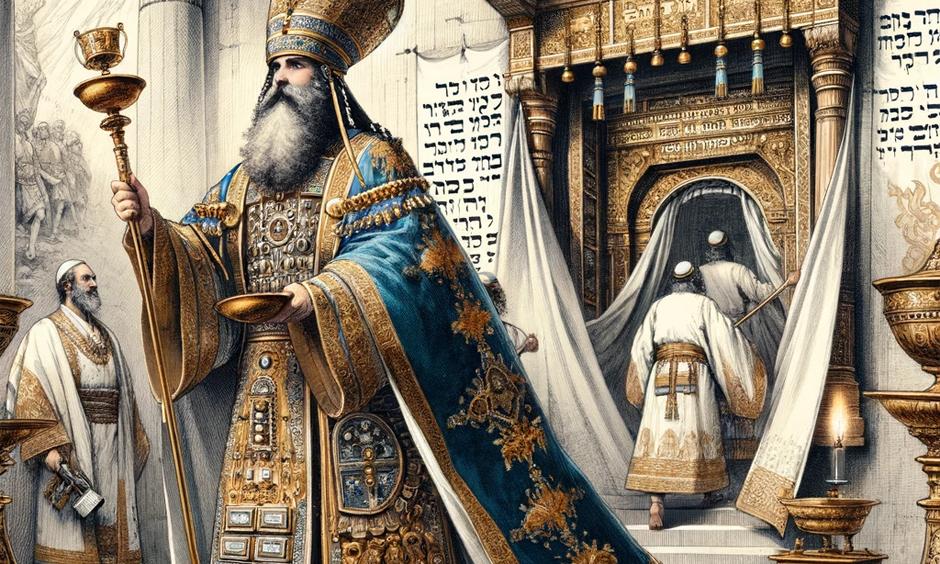What Agreement there is between Christ's Intercessions, and the Intercessions of the High-Priests of Old?

What Agreement there is between Christ's Intercessions, and the Intercessions of the High-Priests of Old?
Examining the question, "What Agreement there is between Christ's Intercessions, and the Intercessions of the High-Priests of Old?" unveils a typological relationship which underscores the continuity and fulfillment of the Old Testament priesthood in Christ's eternal priesthood, enriching our understanding of His mediatory work.. As we reflect on the intercessory roles of Christ and the High Priests of old, we uncover both parallels and distinctions that enrich our comprehension of divine intercession.
First and foremost, it is necessary to recognize that both Christ and the High Priests hold the esteemed office of High Priest. In the Old Testament, the High Priest served as the primary religious leader, acting as a mediator between God and the Israelites. Similarly, Christ is recognized in the New Testament as our High Priest. The Epistle to the Hebrews affirms, "We have such a High Priest, who is set down at the right hand of the Majesty on high" (Hebrews 8:1). This scripture underscores Christ’s role as not only comparable to but superior in every respect to the High Priests of old.
Secondly, the offices of Christ and the High Priests align in their dual aspects of oblation and intercession. The High Priests of old offered sacrifices on behalf of the people and then presented these offerings before God in the Holy of Holies, accompanied by prayers and intercessions. This dual duty finds its perfect fulfillment in Christ’s priesthood: He offered Himself as the ultimate sacrifice on the cross and now continually presents His sacrificial work before God in heaven, interceding for believers. Thus, Christ's priestly functions reflect and perfect the ancient practices, elevating them to their highest form.
Additionally, another point of agreement is the bearing of the people’s names. The High Priest in the Old Testament bore the names of the twelve tribes of Israel on his breastplate as he entered the Holy of Holies. This act symbolized carrying the people into God's presence. Likewise, Christ, our eternal High Priest, carries the names of His elect upon His heart, interceding for them continually before the Father. This continuity emphasizes that Christ’s perpetual remembrance and representation of His people ensure their acceptance and favor before God.
However, the distinctions between Christ’s intercessory work and that of the High Priests are profound and numerous. Christ’s priesthood is superior in several ways. While the High Priests were many and served only for a time, Christ is eternal, serving perpetually as our High Priest after the order of Melchizedek. The writer of Hebrews highlights this, stating, “He is able also to save them to the uttermost that come unto God by him, seeing he ever liveth to make intercession for them” (Hebrews 7:25). This eternal priesthood signifies an unending intercessory ministry, contrasting the temporal and finite service of the Aaronic priests.
Furthermore, the efficacy of Christ’s intercession surpasses that of the High Priests. The Old Testament High Priests entered the earthly Holy of Holies annually to offer sacrifices, which needed to be repeated due to their insufficiency to perfect the worshippers. In contrast, Christ has entered the heavenly Holy of Holies once for all, presenting His perfect sacrifice, which fully atones for the sins of His people. His intercession is not limited by time or the need for repetition but is eternally effective and always prevailing before the Father.
Additionally, the High Priests needed various materials and sacrifices to perform their duties—temple, altar, incense, and animal sacrifices. However, Christ’s intercession requires no such external aids. He is Himself the Temple, the Altar, and the Sacrifice. His divine and human natures provide the perfect means of intercession, rendering all other materials redundant. His merits alone, symbolized as the cloud of incense, make our prayers and persons acceptable before God.
In conclusion, while there is a foundational agreement between Christ’s intercessory role and that of the High Priests of old in terms of their mediatory functions, the differences underscore the superiority and perfection of Christ’s priesthood. Christ’s eternal, efficacious, and self-sufficient intercession offers believers a unique and unparalleled assurance of their acceptance and salvation before God. This theological understanding not only deepens our appreciation of Christ’s work but also anchors our faith in His ongoing intercessory ministry.
----
For more on this topic download The Intercessory Work of Christ by Isaac Ambrose
